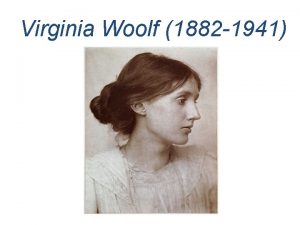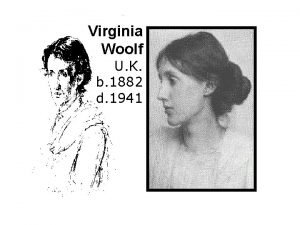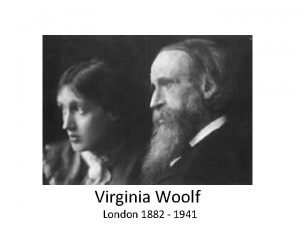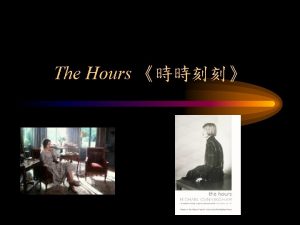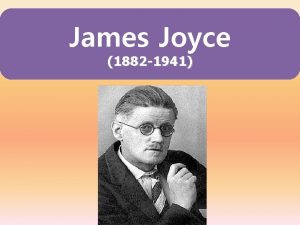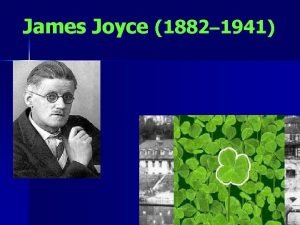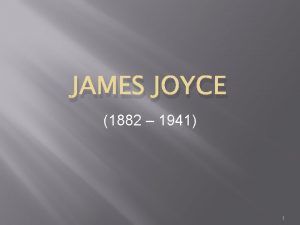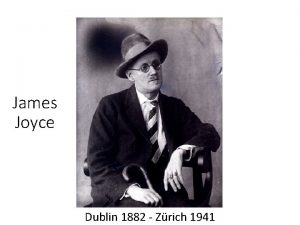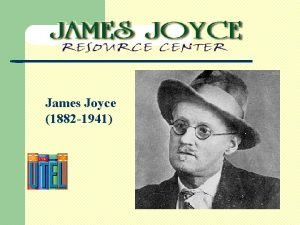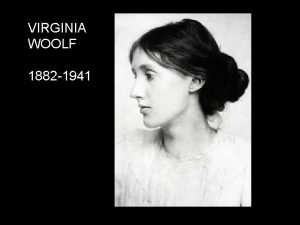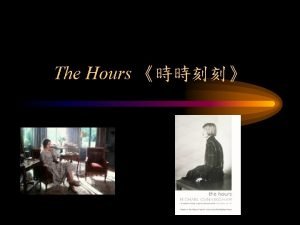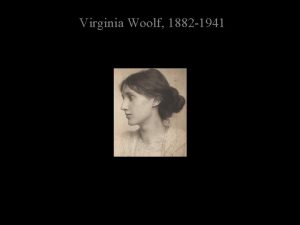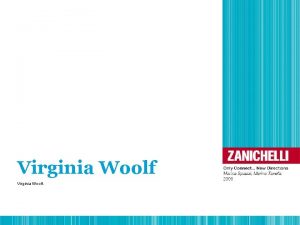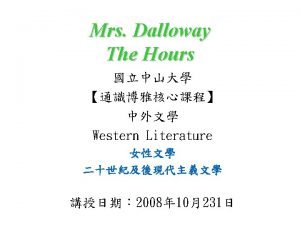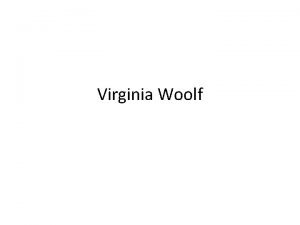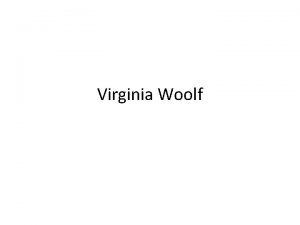Virginia Woolf 1882 1941 LIM Lesson Virginia Woolf











- Slides: 11

Virginia Woolf (1882 -1941)

LIM Lesson Virginia Woolf (1882 -1941)

Early Life • Born in London, the third child of Sir Leslie Stephen, a Victorian critic and philosopher. • She was educated at home. • The deaths of her parents caused her two long periods of deep depression. • In 1913, she attempted suicide by taking drugs. Virginia Woolf

The Bloomsbury Group • After her father’s death, the family moved to Bloomsbury. • Their house became the centre for important literary, artistic and philosophical meetings and discussions by a group of writers: ✓Clive Bell, an art philosopher; ✓Leonard Woolf, a novelist and journalist. He marries Virginia in 1912 and founded with her the Hogarth press; ✓Edward Morgan Forster, a novelist; ✓John Maynard Keynes, an economist; ✓Roger Fry, an art critic. Virginia Woolf

Last Years • She became increasingly subject to crises of anxiety and insecurity. • World War II precipitated the situation. • She drowned herself in the River Ouse in Sussex on 28 March 1941. Virginia Woolf

A Leading Modernist • The Voyage Out (1915) • Night and Day (1919) • Jacob’s Room (1922) → stream of consciousness technique • Mrs Dalloway (1925) • To the Lighthouse (1927) • Orlando (1928) • The Waves (1931) Virginia Woolf

Woolf’s Use of Time It reflects Woolf’s modernist ideas of plot, character and language. She prefers short, meaningful units of time: one day, two different days, … These units expanded almost beyond limits by what goes on within the characters’ mind ↓ Modern Fiction (1919) Virginia Woolf ↘� time of the clock ↘� time of the mind

Feminist Writing and Critical Works • She worked as a volunteer in the women’s suffrage movement. • Some of her works deal with female emancipation: ✓A Room of One’s Own (1929) ✓Three Guineas (1938) ✓The Common Reader (1925 and 1932) ✓A Writer’s Diary (1915 -41) Virginia Woolf

Mrs Dalloway • Woolf rejects the traditional eventful plot. • Her attention is turned to describing the working of her characters’ minds → interior monologues. • The novel is set in London, in the Bond Street area. • Time unit → one day. • What goes on the characters’ minds overlaps with what goes on outside, in the world of external reality. Virginia Woolf

The Story • Clarissa, the wife of Richard Dalloway, a Member of Parliament, spends the day preparing for the party she is giving that evening at her house in Westminster. • She has also invited Peter Walsh, with whom she was in love when she was young, and who has just come back from India • While the party is taking place, Septimius Warren Smith, who has come back from World War I in a state of shock, commits suicide somewhere else in London. • The news is brought to the party by Septimius’ psychiatrist. Virginia Woolf

She loved life, London, … • A fine London morning. • Clarissa goes out to buy some flowers: ↓ she plunges into the life of the city; sights, sounds, people → filtered through her mind; ↓ past and present and moral impressions run through her mind; stream of consciousness. Virginia Woolf
